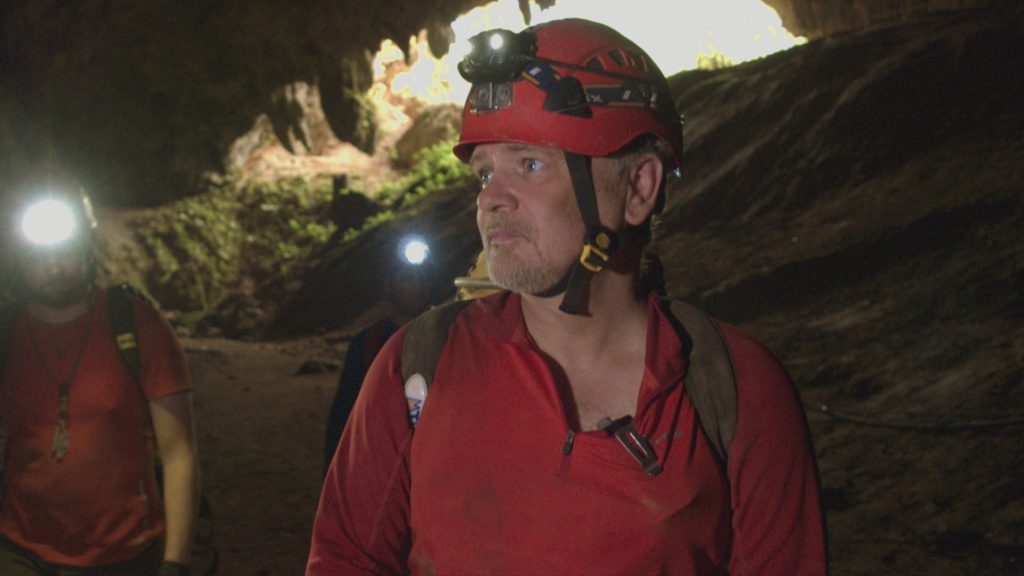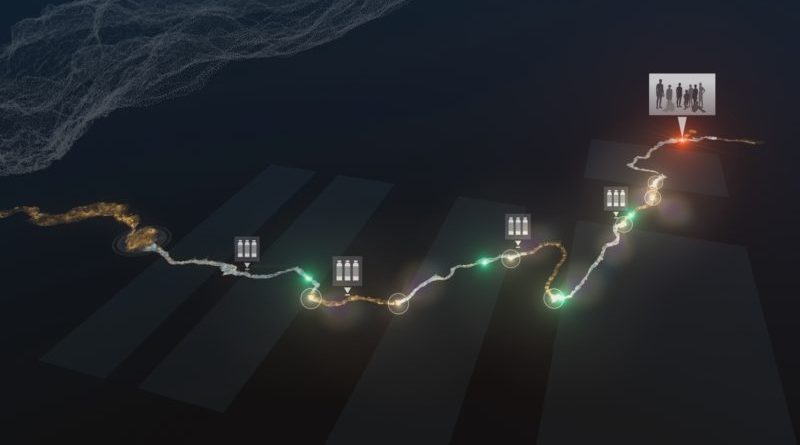INTERVIEW: Nat Geo series dives deeper into ‘Thai Cave Rescue’
Image: The cave data helped generate a new map of the Thai Cave Rescue plan. Showing the underwater sumps the divers had to navigate. Image courtesy of National Geographic / Provided by press rep with permission.
National Geographic is set to premiere Drain the Oceans: Thai Cave Rescue Monday, Sept. 2 at 9 p.m. The TV special looks back at those fateful days when a group of 12 boys and their soccer coach were stuck in a labyrinth underground.
Thai Cave Rescue offers audience members an unprecedented rendering of the Tham Luang cave system in Thailand, detailing how rescuers in July 2018 were able to work their way through the maze and save the trapped boys.
Amazingly, the boys were stuck 1-1/2 miles from the cave’s mouth, with nine chambers between their plight and their rescue. Nat Geo pieces together all of the evidence to show viewers just how desperate, drastic and dangerous this situation was for the unlucky 13.
Recently Hollywood Soapbox exchanged emails with Sophie Elwin-Harris, director of the special Drain the Oceans episode. She has previously directed Egypt’s Lost Wonders and Villains of the Underworld for the TV program. Other credits include The Story of Wales, Museum of Life and Immortal Egypt. Questions and answers have been slightly edited for style.
What were some of the unique challenges of filming this particular episode of Drain the Oceans?
There were two particularly big challenges: the first was getting permission from the Thai authorities to let a survey team go into the Tham Luang cave system so they could carry out a 3D laser scan of every part of the rescue route. Combining the scan data with state-of-the-art computer graphics we would recreate a virtual model of the cave. This could accurately show all the narrow passages, twists and turns of the tunnels to reveal the dangers and the sheer physical difficulty the rescuers faced as they tried to bring the boys out.
It took months of negotiations with the Thai government, and then there was the issue of timing. The cave floods for much of the year, so there is only a short season when it is dry enough to film inside. It was a tight window of opportunity, and we had to be ready to go as soon as the time was right. But that time was later, and the opportunity tighter, than we expected. It was four months into the dry season with the window closing before it was safe enough for the survey team and film crew to walk in, without the need for diving equipment.
We were going to attempt something that has never been done in these caves before: a laser survey using the latest and most advanced equipment to give us an amazing accurate 3D recreation of what the caves looked like. We were concentrating on a 1.5-mile section of the cave from the entrance to the chamber where the boys were stuck. The full scan took three weeks. The team we used are experts in cave exploration, but this was my first time working in such a challenging underground environment.
Filming was grueling and took three days, and a lot of hauling kit in caving bags. We may not have had the water that the rescuers had to face, but we did have silt. The caves were full of it, making the passages impassable in parts. Some sections had to be dug out so we could make progress. But even then, we sometimes had to belly-crawl to get through gaps that were just 18 inches high. I have never caved before, so my first glimpse of a low tunnel heading into blackness was daunting.
Fear kicked in, even though I’m not claustrophobic. The experienced guys who have done it many times before told me the trick to avoid panic is to recite a favourite nursery rhyme. So I kept reciting ‘Twinkle Twinkle Little Star’ face down in the dirt and squeezed through. It was also very comforting to know that I was with by expert cavers and that I would come back up and see daylight each day. It made me realise just how terrifying it must have been for the boys not to have that certainty — just fear and darkness.

How long was the production for this episode?
From development to finished film it took 10 months, but it was stop and start all the way, as we waited for the permissions to come through and the dry season to start.
Although the advanced mapping and LiDAR technology can be difficult to understand, was it your mission to present the technology in an easy-to-comprehend manner for audiences?
Yes, it was. We outline the basic information on how LiDAR works, so that audiences can understand why the data it gathers is crucial to creating the scientifically accurate computer-generated images of the cave. But we spend more time presenting what the virtual cave can reveal about an incredible story. For instance, the first accurate visualization of the flooded parts of the cave that even the rescue divers were unable to see, because of bad visibility. So, the audience get the sense of flying through some of the most life-threatening parts of the rescue dives and hearing from two of the divers who tell us how they coped with those difficulties. We also used the computer-generated images to show exactly how the boys got trapped and how they managed to survive.
You’ve directed a few of these Drain the Oceans episodes. What do you like about this series?
I love the breadth of stories that the episodes explore and the unusual visual spectacle the shows offer audiences. The series follows scientists and archaeologists using scanning technology to uncover and solve mysteries. By following their investigations, Drain The Oceans can virtually drain shipwrecks, sunken cities, underwater volcanos and even caves and lost airplanes — anything that’s hidden from view. The computer-generated images then bring the underwater clues to life, helping us to unravel past events — why battles were fought, how empires were lost, why cities disappear beneath the sea, or in the case of the Thai Cave Rescue, how did they do it?
What do you hope the audience takes away from the episode? What do you hope they ultimately learn?
When the rescue was unfolding on the news I remember thinking how terrifying it must have been to be trapped underground like that. The world was watching, and it was amazing to see the boys and their team coach emerging alive in the end.
Because the rescue was carried out underground in a place inaccessible to most cameras, except those worn by the brave Thai Navy Seals, it was almost impossible to fully appreciate just how many challenges the rescuers faced. One former Navy Seal, Saman Kunan, died while placing air tanks inside Tham Luang, and that highlighted the sacrifice and risk the teams were taking.
I hope that by revealing the cave in detail, from the inside, with the rescuers telling us in their own words how they saved the boys and what that felt like, people will discover just how experimental and dangerous this rescue was. It succeeded thanks to a brave and radical plan, carried out with military precision, by an international team of thousands, all coming together to save lives. When we were filming inside the cave in the very spot the boys had been trapped, the lead cave surveyor Roo Walters said: ‘It’s amazing what people can do when they work together.’
By John Soltes / Publisher / John@HollywoodSoapbox.com
Drain the Oceans: Thai Cave Rescue will premiere Monday, Sept. 2 at 9 p.m. on Nat Geo. Click here for more information.

